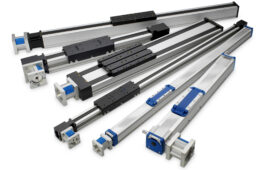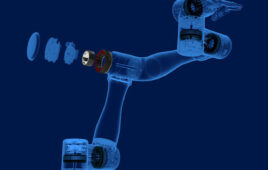Leland Teschler, Executive Editor
[email protected]
On Twitter @ DW_LeeTeschler
Engineers tend to have a dim view of managers, often with good reason. The comical scenarios depicted in Dilbert cartoons are popular precisely because they hit so close to home for the techies who make up much of the cartoon’s readership.
But despite the impression you might get from the lampooning in Dilbert,  sometimes management can have a positive impact. For an example, consider an incident related by Leif Babin, a former U.S. Navy SEAL officer. For a while, Babin was one of the instructors who helped put SEAL candidates through the infamous hell week training characterized by little sleep and near constant harassment. Babin relates a story about a particular class where one of the student groups, called boat crews, excelled at nearly every task. Another boat crew habitually came in last. This dubious distinction got them extra work and needling from the instructors. It also led to a lot of bickering, blaming, and sharp exchanges among the members of that team.
sometimes management can have a positive impact. For an example, consider an incident related by Leif Babin, a former U.S. Navy SEAL officer. For a while, Babin was one of the instructors who helped put SEAL candidates through the infamous hell week training characterized by little sleep and near constant harassment. Babin relates a story about a particular class where one of the student groups, called boat crews, excelled at nearly every task. Another boat crew habitually came in last. This dubious distinction got them extra work and needling from the instructors. It also led to a lot of bickering, blaming, and sharp exchanges among the members of that team.
Then one of the SEAL instructors got the idea of swapping leaders between the two boat crews. Surprise! The perpetually losing crew began coming in first or second in competitions. Meanwhile, the other team, perhaps because of good habits previously learned, still put in strong showings. Babin says the whole exercise was a learning experience for everyone involved.
Readers who feel their superiors aren’t first-rate might be wondering how to go about swapping their own management for the SEAL trainee who ran that boat crew. Unfortunately, bad management is common – so much so that companies try to invent processes that will work even when individual managers aren’t super competent.
Procedures collectively called “structured management practices” are one such attempt. They seem to be beneficial, at least in manufacturing companies. That’s one conclusion from a paper written by a group of economists at the Center for Economic Studies. Analyzing U.S. Census Bureau data from 32,000 manufacturing firms, the researchers – who hailed from Stanford, M.I.T. University College London, and the Census Bureau — found companies that used structured management practices grew faster, were more profitable, had a more productive workforce, and were more innovative than those that didn’t.
The structured management practices tended to revolve around quantitative metrics, keeping people informed, and paying for performance. For example, researchers asked manufacturers in the study about the number of key performance indicators that were monitored, how frequently managers reviewed the key performance indicators, who at the firm was aware of production targets, and how non-managers were typically promoted. Higher scoring companies tended to perform better than firms whose management practices were more lackadaisical.
The problem is, of course, the quantification you find in structured management works well when the plant output is something you can count, as is the case with manufactured parts. But it may not be a net positive where the finished product is more nebulous. When people use creative initiative to get things done, there’s often nothing concrete to look at. Trying to put numbers on knowledge work can lead to its own Dilbertisms. Real managers know when to quantify and when not to.
With that truism in mind, it would have been interesting to ask the SEAL boat crew leader how many key performance indicators he was monitoring.
You may also like:
Filed Under: NEWS • PROFILES • EDITORIALS, Commentaries • insights • Technical thinking, Trends









